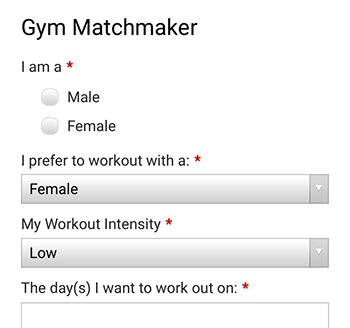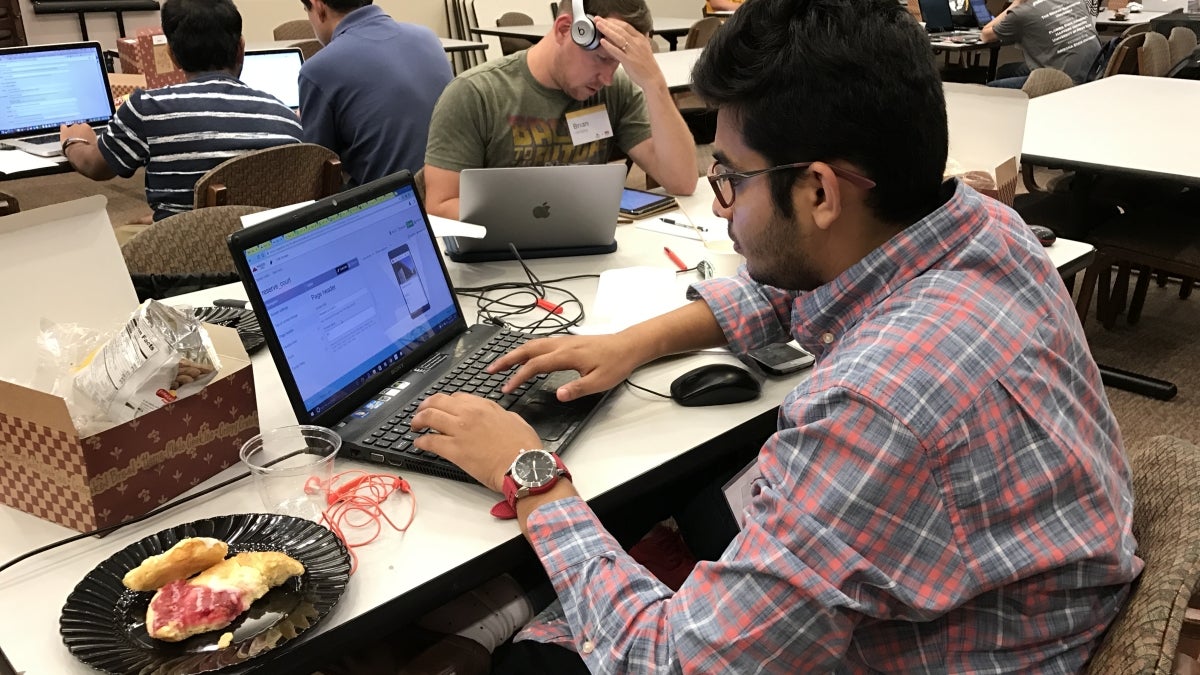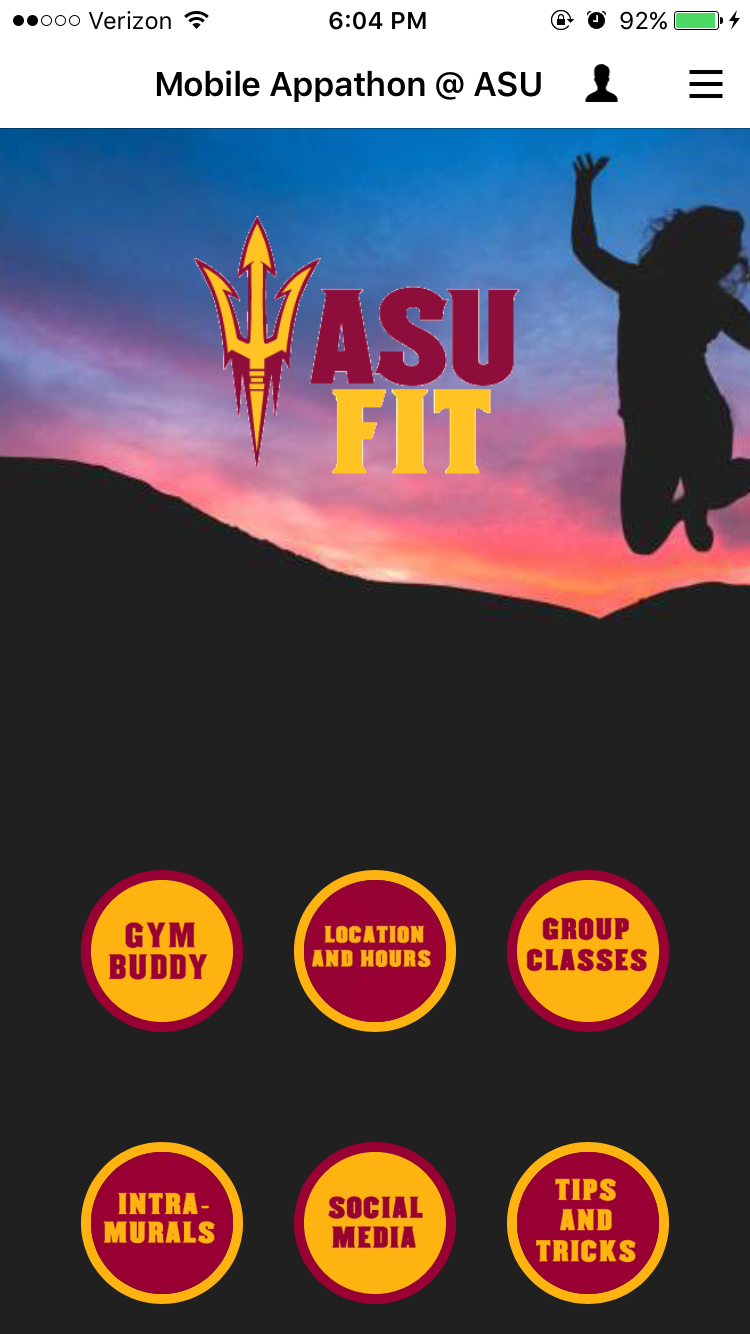Three ASU students who didn’t know each other before this past weekend are now bonded for life, thanks to their innovation and participation in the Great Mobile Appathon.
Their winning app, called ASUFit, taps into a unique market — on-campus fitness — and efficiently pairs students with gym buddies.
Arizona State University was one of five schools to host the Modo Labs event, Oct. 15–16, which encouraged students from a non-technical background to learn how to develop apps in a competition for scholarship money. Other host schools included Harvard University and Notre Dame.
Sixteen students formed teams and participated in the event, held at the Memorial Union on the Tempe campus and sponsored by ASU’s University Technology Office. Each team chose a theme or idea that was geared toward campus life and efficiency.
Lindsey Moen had no prior app development experience before participating in the event.
“It seemed like an interesting opportunity and neat way to apply for a scholarship, so I signed up,” Moen said.
She then decided to use her interest in basketball and an issue she often faces — finding people to play with — to create the idea behind ASUFit.
“I enjoy playing basketball,” she said, “But not a lot of girls are found playing at the gym. Even though there is a gym buddy sign-up system, it wasn’t as efficient as I thought it could be. Plus, why use pen and paper when you can have an app!”

With the ASUFit app, users can select preferences to help match them with a gym buddy.
ASUFit was designed to allow students to set their gym preferences — from activities they enjoy, to what they would like to work on and whom they would like to work out with. It then pairs students from a database, and students are able to set times to meet up at the gym.
Moen’s teammates agreed that it would be a useful app on ASU’s campus.
“I’ve seen that ASU has a big fitness culture, but it can be a hard for a newcomer to jump into going to the gym; this app can help with that,” said Vincent Truong, a computer science sophomore.
Samantha Muro, a community health major, was surprised by how much she enjoyed the competition.
“Thinking about how innovative this campus is, I was really surprised I was selected,” said Muro. “But it was really neat to see how much goes into creating an app. It changed my view on the apps the we use every day.”
The three students won $3,000 as their first-place prize and now will compete against other first-place apps from the other host universities across the country. They all intend to continue competing next year.
“I hope that this becomes more popular at ASU,” Truong said. “It would be interesting to see what other people’s ideas are as well.”
The team is excited to see how they will rank nationally, and to see their app through completion and come to life here at ASU — plans are in motion to move it toward production.
“I think it is so awesome that this is could potentially be used by ASU,” Muro said. “I love this school and seeing something that I did will make a difference on campus.”
Top photo: ASU students participate in the Great Mobile Appathon on ASU's Tempe campus Oct. 15. Photo by Kanak Jha/ASU Now
More Science and technology
Large-scale study reveals true impact of ASU VR lab on science education
Students at Arizona State University love the Dreamscape Learn virtual reality biology experiences, and the intense engagement it creates is leading to higher grades and more persistence for biology…

ASU-led space telescope is ready to fly
The Star Planet Activity Research CubeSat, or SPARCS, a small space telescope that will monitor the flares and sunspot activity of low-mass stars, has now passed its pre-shipment review by NASA.…

ASU at the heart of the state's revitalized microelectronics industry
A stronger local economy, more reliable technology, and a future where our computers and devices do the impossible: that’s the transformation ASU is driving through its microelectronics research…



